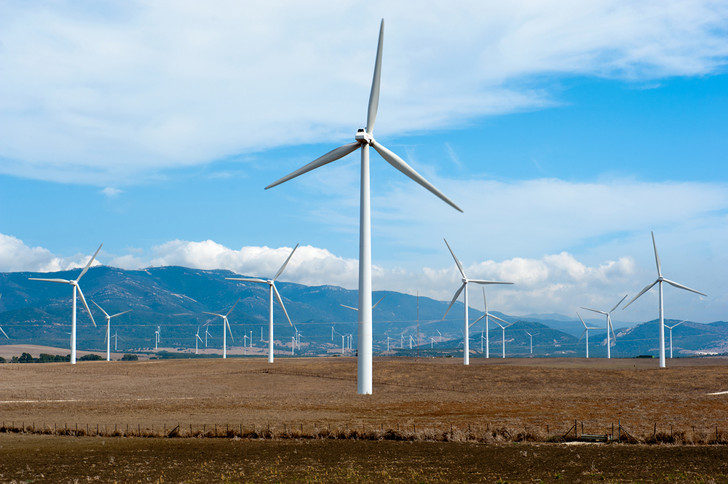Wind farms: what they are and why they are spreading

Wind power is an inexhaustible source of clean energy , extremely important for combating climate change and promoting the energy transition.
Known and used for centuries, for example for navigation or to operate mills, it is now exploited using wind turbines , technically defined as wind turbines , structures which, with the help of special generators , allow kinetic energy to be transformed into energy electric.
The wind turbines are kept in wind farms , well-defined areas intended for the production of energy through the force of the wind.
Wind energy: how it works
A renewable source obtained by exploiting the movements of air masses on the earth's surface , wind energy is inexhaustible and sustainable , as its production and distribution does not release carbon dioxide or other greenhouse gases into the atmosphere.
The operation of wind turbines, which are increasingly present in Europe, so much so that they recorded a 40% increase in installations during 2022, is not particularly complex and can be summarized in a few points:
- the wind turbine , made up of a tall structure made of steel, produces mechanical energy thanks to the rotation , favored by the wind, of the three-bladed rotor ;
- the mechanical energy is conveyed to a generator , located near the structure, which transforms it into electrical energy ;
- at this point, the energy, via a cable duct that connects all the wind turbines present in the wind farm, is sent to the delivery cabin and fed into the electricity grid.
Why wind energy is important
The production and use of wind energy offers many interesting benefits, starting naturally with the great help provided in the energy transition and in the fight against pollution.
In addition to these, common to all renewable energy sources, there are others, peculiar to wind power, such as:
- the high conversion efficiency , between 40 and 50%;
- the space occupied is relatively small compared to the energy produced;
- the possibility of exploiting the surface of the sea ;
- the low impact on the environment;
- the costs are almost contained.
Wind farms in Europe
Year after year , Europe records an ever-increasing number of wind farms , both of the on-shore type, i.e. built on land , no less than 3 kilometers from the coast, and of the off-shore type, i.e. built in the sea open , away from the coast, or on the lakes.
As regards the latter, one cannot fail to mention the Hornsea cable in the United Kingdom, currently under construction , which, using Prysmian cables as can be read on the company's website, will develop an efficient submarine connection for the transmission of energy to the mainland.
Analyzing, however, those on the mainland, it can be noted that, although Denmark and Ireland boast the largest share of wind power produced on the territory, followed closely by the United Kingdom, Germany and Portugal, the largest on-shore wind farm on the continent was made in Romania : Fântânele-Cogealac has 240 wind turbines and has a nominal capacity of 600 MW .
Also equipped with high capacity are the Whitelee park, in Scotland, characterized by a maximum power of 322 MW, and the Buddusò-Ala dei Sardi park , in Italy, with a capacity of 138 MW.

Thanks to our Telegram channel you can stay updated on the publication of new Economic Scenarios articles.
The article Wind farms: what they are and why they are spreading comes from Economic Scenarios .
This is a machine translation of a post published on Scenari Economici at the URL https://scenarieconomici.it/parchi-eolici-cosa-sono-e-perche-si-stanno-diffondendo/ on Wed, 13 Sep 2023 05:00:56 +0000.
